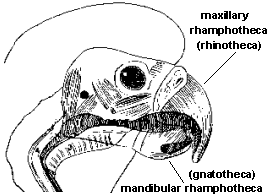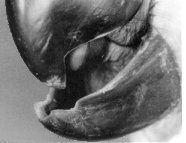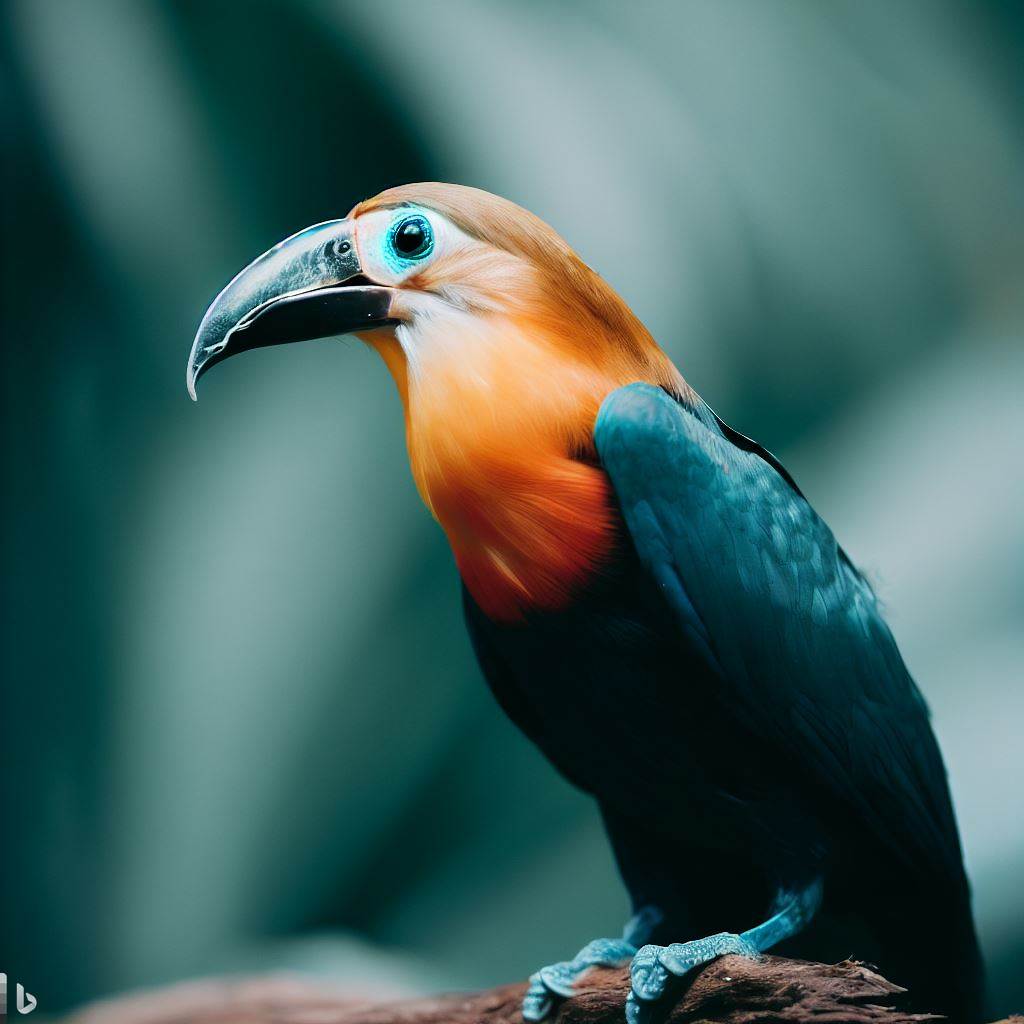 The avian beak is a complex, remarkable organ composed of bone, vascular layers, keratin, dermis and a germinative layer. It continues to grow throughout the bird’s life and is constantly worn down by feeding, grooming, climbing, chewing and rubbing. The rate of keratin replacement depends upon the use of the beak.The beak is also known as the rostrum and includes the bones of the upper and lower jaws and their horny sheaths. The upper horny sheath is the maxillary rhamphotheca or rhinotheca (upper beak), while the lower horny sheath is the mandibular rhampotheca or gnatotheca (lower beak). The tomium is the cutting edge of the beak.
The avian beak is a complex, remarkable organ composed of bone, vascular layers, keratin, dermis and a germinative layer. It continues to grow throughout the bird’s life and is constantly worn down by feeding, grooming, climbing, chewing and rubbing. The rate of keratin replacement depends upon the use of the beak.The beak is also known as the rostrum and includes the bones of the upper and lower jaws and their horny sheaths. The upper horny sheath is the maxillary rhamphotheca or rhinotheca (upper beak), while the lower horny sheath is the mandibular rhampotheca or gnatotheca (lower beak). The tomium is the cutting edge of the beak.
The size and shape of the beak varies greatly in birds and correlates with their feeding habits.
Parrots and ducks have a ‘bill tip’ organ located at the tip of their beaks which consists of well developed mechanoreceptors and nerve endings.
Large diverticula (air-filled chambers) of the infraorbital sinus extend into the premaxilla enabling it to be thin and light weight.
In psittacines (parrots), a kinetic joint connects the upper and lower jaws to the skull.
Trauma
Trauma to the beak may occur as the result of punctures, crush wounds, fractures and avulsions, often caused by another bird. These wounds must be cleaned out appropriately and antibiotics and antifungals should be given to the bird. Sometimes trauma is so severe that a large portion of the beak may be severely damaged. Fortunately, acrylics may be used to repair the beak until new tissue replaces it.
Parrots, especially very young birds, may break the tip of their beak off by hitting the tip of their beaks when landing awkwardly. The bird often refuses to eat because his beak is extremely sore. Fortunately the tip can be cauterized to stop bleeding that may occur.
 Scissors Beak
Scissors Beak
Scissors beak is a lateral deviation of the rhinotheca. It is thought to be caused by improper artificial incubation. It appears to occur predominately in cockatoos and macaws, but can occur in any species.
Appliances may be used to ‘straighten’ the beak in the early stages, but surgery may be necessary.
Parrot Beak

This is most commonly seen in cockatoos. It is rarely seen in parent raised birds and it is thought that parents may assist beak development by locking onto the rhinotheca when feeding the chicks. This condition may sometimes be corrected with an acrylic appliance.
Diseases and Diet Deficiencies
In addition to trauma, bacteria, fungi, viruses and parasites may damage the germinal layers of the beak. Calcium and viatmin D3 deficiency may result in a soft beak or ‘rubber bill’.
Liver disease may result in abnormal beak growth and small hemorrhages in the beak. This is most prevalent in budgies on an all seed diet.
The beak is a dynamic organ. Large parrots can completely replace their rhinotheca (upper beak) in 6 months. The gnatotheca (lower beak) grows 2-3 times faster than the rhinotheca.
A normally shaped beak does not usually need to be trimmed. It is worn down by the bird’s daily activities. However, items to chew, such as toys and wooden perches should be provided to pet birds.


 Scissors Beak
Scissors Beak